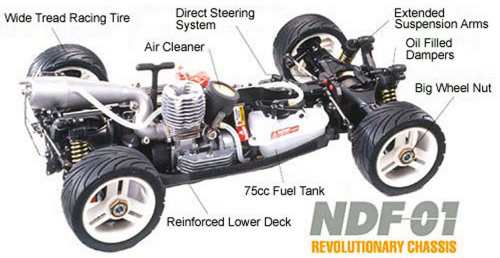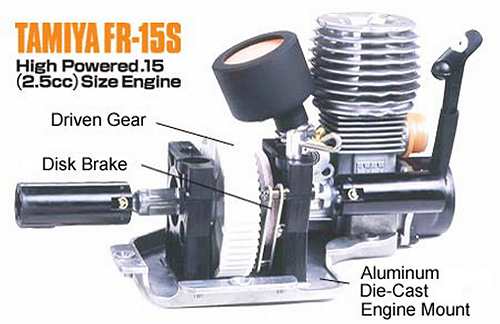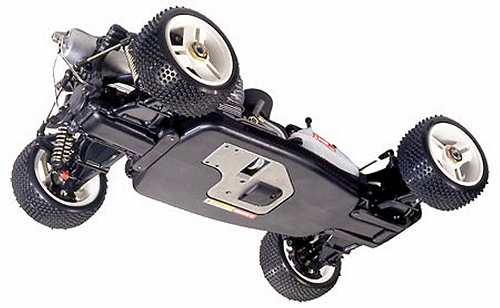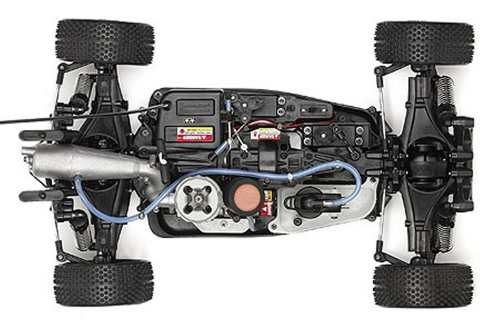

|
|
|


|
Tamiya Nitro Thunder - 43514 (Radio Controlled Model Review)1/10 Scale Nitro Buggy: NDF-01 Chassis
Released by Tamiya in October 2004, the 4WD XBG Nitro Thunder - # 43514 - is No.14 in the Expert Build Factory Assembled Glow-Engine RC Car Series and is based on the NDF-01 chassis, with an FR-15S engine.
▼ Scroll Down for More Images ▼
Rating: 4
|








|
|
|

|




Buying a Used Tamiya Nitro Thunder Buggy (and What to look for)
Make a General Visual Inspection
Check the Body-Shell
If the body shell of your Tamiya Nitro Thunder is broken, ripped or damaged in any way, this can be easily repaired with rubber solution glue. Also, for added protection and if available for your Nitro Thunder model, fit an under guard to stop dirt and gravel entering the chassis. Drive Shafts and Turnbuckles
Examine the Drive System
The gearbox of your used Buggy should be opened up to check for gear wear and lubrication. A thin coat of grease is often used on internal gears and although this is fine for basic running around on the back yard, if you intend to race your Buggy at a higher level, this should be removed and replaced with racing oil (ZX1 or Teflon Oil). Of course, this should be reapplied after each race meeting. Pinions and Spur Gears
Don't Neglect the Ball-Joints
Ball joints always cause problems. For top level Nitro Buggy racing, the plastic ball connectors should be checked and if deemed necessary changed after every meeting. A simple thing like a loose fitting connector popping off could easily end your race, so better safe than sorry. Steering Servo and Servo-Saver
Stabilizers
If body roll on your Tamiya Nitro Thunder is a problem, handling can be improved with the use of stabilizers, anti roll or sway bars, stiffer tuning springs and, or, thicker silicone oil in the dampers. Don't Forget those Bearings
▼ Scroll Down for More Articles and Advice ▼
Or, check out our RC Model Car Setup Guide
|









|






|
|
|
|
Hints, Tips and Information
Getting into RC
When I first got into racing RC, all I had was a three year old clapped out Tamiya Boomerang, a silver can stock motor, three step mechanical speed controller, two 1400Mah stick batteries and basic Acoms stick transmitter. |
|
Hints, Tips and Information
Servos for RC Models
Servos are found on all kinds of Radio Controlled Models. RC Touring Cars, Buggys, Trucks, Truggys, Monster Trucks, Rock Crawlers, Airplanes, Helicopters, Boats and Ships for Steering, Throttle Control, Rudder Operation and Wing Flaps. |
|
RC Models:
|
Radio & Motors: |
Other
Accessories: |